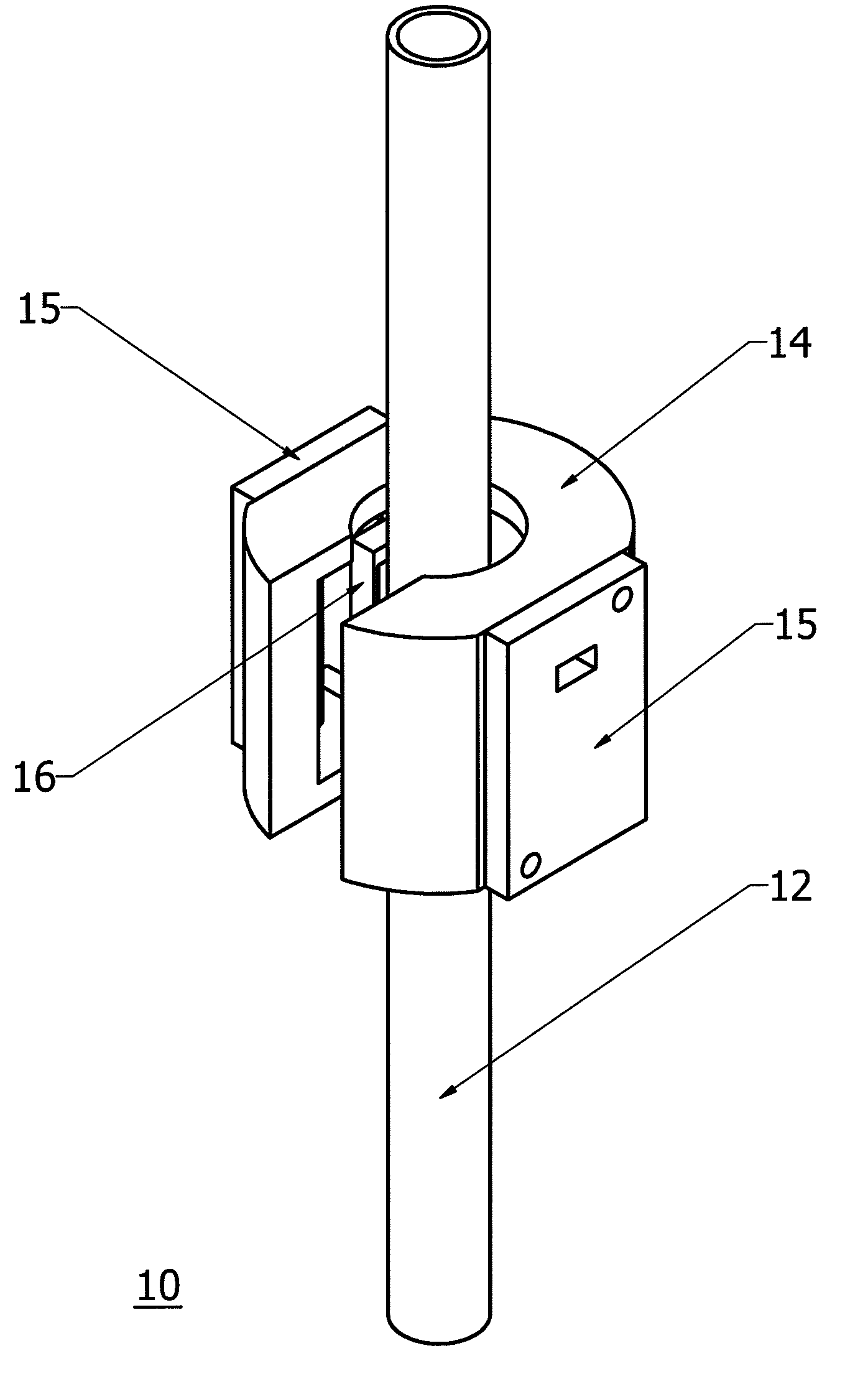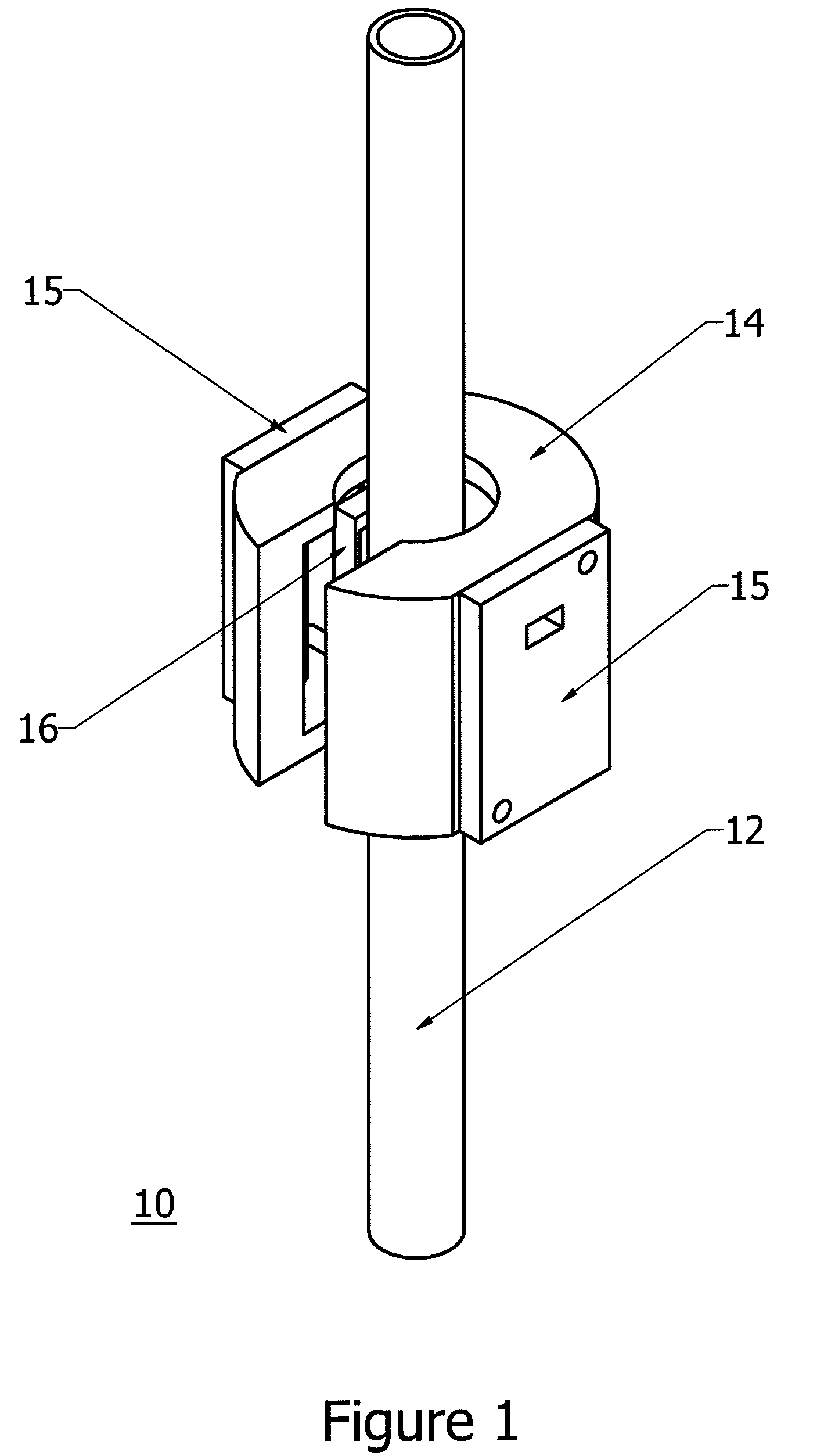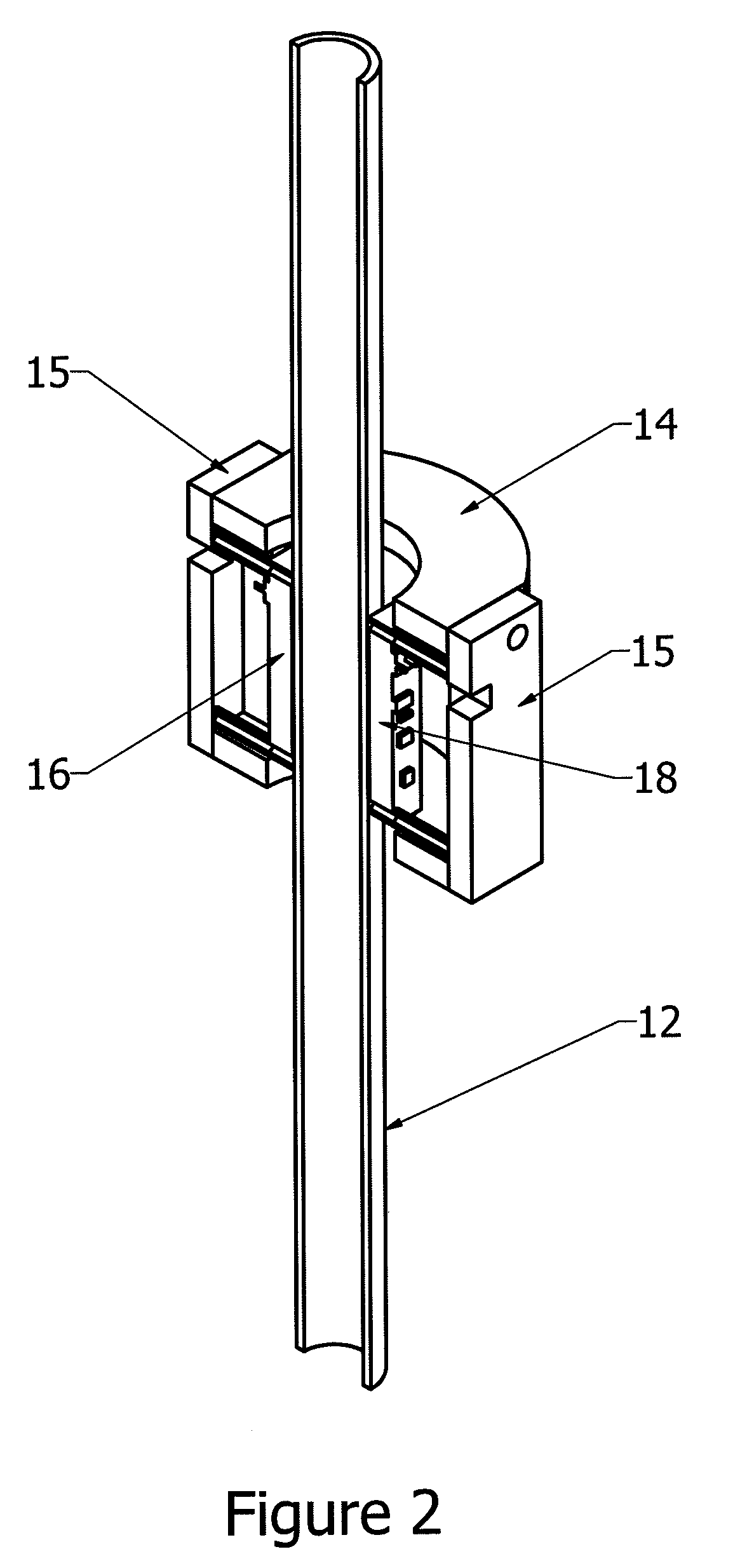Systems and methods for detecting the presence and/or absence of a solid liquid or gas
a technology of solid liquid or gas detection and sensing system, applied in the direction of optical radiation measurement, instruments, using reradiation, etc., can solve the problems of long response time, subject to mechanical breakdown, and the channel itself is subject to corrosion and/or fouling with debris and/or mineral or chemical deposits, etc., to achieve the effect of increasing the system efficiency
- Summary
- Abstract
- Description
- Claims
- Application Information
AI Technical Summary
Benefits of technology
Problems solved by technology
Method used
Image
Examples
Embodiment Construction
[0052]FIG. 1 illustrates a first preferred exemplary embodiment of the present invention, which is shown generally at 10. The arrangement illustrated in FIG. 1 is suitable for a wide variety of applications including fluid flow sensors, fluid level sensors, solid product detectors and pill counters. It should be recognized that these are just a few of the examples of applications for this arrangement. In this first preferred exemplary embodiment, a tube member 12, preferably comprised of a nonconductive material such as plastic, and the like, provides a transmission channel for a liquid, solid or gas.
[0053]An RF energy emitter / receiver structure housing 14 preferably surrounds or at least substantially surrounds the tube member 12. In illustration of FIG. 1, the housing 14 is a C-shaped generally cylindrical body located around the tube member 12. The RF energy emitter / receiver structure housing 14 may be comprised of a conductive material such as machined aluminum or any other cond...
PUM
| Property | Measurement | Unit |
|---|---|---|
| transmission frequencies | aaaaa | aaaaa |
| frequencies | aaaaa | aaaaa |
| frequencies | aaaaa | aaaaa |
Abstract
Description
Claims
Application Information
 Login to View More
Login to View More - R&D
- Intellectual Property
- Life Sciences
- Materials
- Tech Scout
- Unparalleled Data Quality
- Higher Quality Content
- 60% Fewer Hallucinations
Browse by: Latest US Patents, China's latest patents, Technical Efficacy Thesaurus, Application Domain, Technology Topic, Popular Technical Reports.
© 2025 PatSnap. All rights reserved.Legal|Privacy policy|Modern Slavery Act Transparency Statement|Sitemap|About US| Contact US: help@patsnap.com



